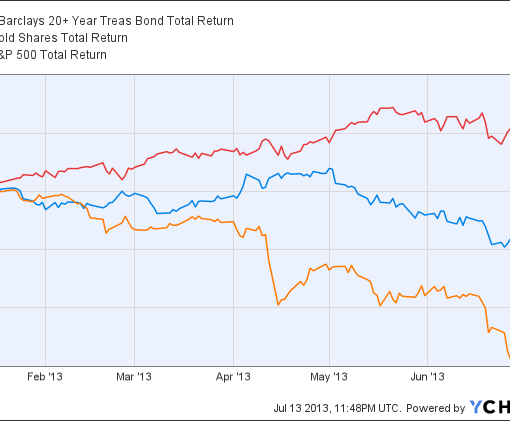 Covestor and Island Light Capital together recently launched three low-cost investment strategies geared specifically for accounts of $20,000 or less. The strategies — Island Light’s Harbor Series — use Island Light’s investment framework to produce globally diversified, target risk portfolios. Island Light Founder and President Matthew Pierce (pictured at right) manages the strategies. We recently had a chance to ask Matt some questions about the methodology behind these portfolios.
Covestor and Island Light Capital together recently launched three low-cost investment strategies geared specifically for accounts of $20,000 or less. The strategies — Island Light’s Harbor Series — use Island Light’s investment framework to produce globally diversified, target risk portfolios. Island Light Founder and President Matthew Pierce (pictured at right) manages the strategies. We recently had a chance to ask Matt some questions about the methodology behind these portfolios.
Covestor: The Island Light Harbor Series portfolios are designed to help the small investor. As you see it, what are the challenges facing small investors today and how do these portfolios address that?
Pierce: In our assessment, most individual investors do not have the background, training, time or temperament to manage their own investments. We recommend that they consider seeking professional guidance from an advisor which whom they can build a long lasting relationship. But small investors frequently do not have sufficient wealth or income to hire a professional financial advisor. As a result, we believe, most small investors have to make their own investment decisions, using typically limited investment options.
Individual investors can make basic mistakes when it comes to managing their own investments. They may buy the best performing funds at the wrong time, trade in and out of risky positions, have too much of their money in a single stock, become emotional about investment losses, take shortcuts, lose heart or stop trading when they get frustrated. We believe that a disciplined professional investment process can alleviate some of the common mistakes made by individual traders.
A number of independent technologies and investment products have evolved to create new opportunities for the small investor. Covestor is a good example of how a small investor can get professional investment management using low-cost funds and enabling internet technology.
Our Harbor Series models are core portfolios built for investors with smaller accounts, yet are designed to take advantage of some of the professional tools available to institutional investors. We keep the number of securities low to reduce trading costs and to make implementation easier. And we have created portfolios that we believe may satisfy aggressive and conservative investors and those in-between.
We use a disciplined process to try to take emotion out of the investment decision. We use our own advanced investment strategy to build the allocations, and we select a universe of liquid, low cost, broad-category ETFs to gain market exposure. We believe that a successful long term investor will have investments in both stocks and bonds.
It is important to keep the financial goal in mind when investing. By focusing on the intended outcome (college savings, retirement savings, money for down payment on first home, etc.), the individual can combine personal savings and appropriate investment holdings to meet their financial objective.
Covestor: How do you choose the particular ETFs you use for each model?
Pierce: The first thing we do is to identify the securities that make sense for the investment strategy. Because we are working with small accounts, we only want to own a few separate positions, or we might run into trading and implementation problems. Next, we consider how we can gain exposure to our favorite investment classes. We choose broad, comprehensive indexes that cover large and small global public companies for potentially higher returns, and the U.S. bond market and inflation-protected securities for income and safety. We then pick ETFs that track the indexes, are easily traded (“liquid”, in the trade vernacular), have low expenses and come from reputable investment providers.
Covestor: What are your thoughts on Modern Portfolio Theory and how do you apply it with these portfolios?
Pierce: While Modern Portfolio Theory has many critics, and some of the assumptions underlying MPT may be flawed, until a viable, theoretically valid and commercially viable alternative theory becomes the standard, we will use many of the valid elements of MPT. We are well aware of the flawed assumptions of MPT (for example, normality of return distribution, static correlations, investors are rational and risk-averse, perfect liquidity, estimation error, etc.). Over the years, many experts have created techniques to address some of these flaws and we employ these techniques in creating our portfolios. But rejecting the underlying framework in the absence of a clear and rational alternative is not an option. We reject that alternative and use our own strategy and techniques to address and alleviate some of the major criticisms of MPT.
Specifically, we address the issues of estimation error in MPT by using capital market estimation procedures and the statistical technique of resampled efficient optimization. We explicitly consider the uncertainty inherent in our assumptions when we build our efficient portfolios. These techniques result in more intuitive portfolios that are generally considered more stable and diversified than the traditional MPT portfolio. In addition, using forecasted non-normal return distributions does not appear to offer material advantages in portfolio construction when using resampled efficient frontier technology.
Investors need to recognize that all investment models are flawed in some way, and that forecasting investments is uncertain and error-prone. But using a model , even an imperfect one, is most likely better than not using a model. That is why we pay experts.
Covestor: These portfolios use “a statistical optimization procedure to develop portfolio weightings that are intended to maximize risk-adjusted returns”. Can you explain how this works?
Pierce: One of the foundational tenets of investing is that investors should be rewarded for taking on more risk. If investors are not rewarded for taking on more risk, then they will obviously choose not to take the risk. There is, therefore, for every level of risk, a theoretically optimal “perfect” set of securities that could maximize return. This risk-return relationship is the famous “efficient frontier”. We strive, therefore, to identify this optimal portfolio as a goal of our investment philosophy.
But there is a flaw in this analysis, and that is that the forecast of the risk and return relationship of individual securities has a great deal of uncertainty. Even with the most advanced tools, no human can forecast the future. We have found that modern statistics can help us use current information to position well for the future. And we have found that combining portfolio optimization (MPT) and modern statistics can make us better portfolio managers.
Basically, the way this works is that we assume a degree of inaccuracy in the security return, risk and correlation relationships. We then use statistics to create modest changes in the input assumption, using a technique called resampling. We put the changed, simulated, assumptions into a traditional optimizer and create a simulated efficient frontier. This simulated efficient frontier is “statistically equivalent” to the original efficient frontier. We then repeat this process thousands of times and create a “statistically equivalent region” of efficient frontier portfolios. After this step is completed, we take an average of the many simulated efficient frontier portfolios. The averaging of the many frontiers creates a single, different “resampled efficient” frontier, which has some unique properties, the most important of which is that it tends to possibly produce better performing portfolios. This process is also known as Michaud optimization, after the founders of New Frontier Advisors, where the technique was patented and trademarked.
We use this statistical process to select the portfolio on the resampled efficient frontier that best approximates the risk/return profile desired by us.
Covestor: How do you decide what percentage of the equity allocation should be international versus domestic?
Pierce: The world economy has changed significantly over the last fifty years and has become more interconnected and global. We buy phones made in Korea and sell computer programs to Brazil. Today, according to Morgan Stanley Capital International, approximately 45% of the world equity market, including emerging markets, is based in the USA. The rest is in international developed and emerging markets. On the other hand, the GDP of the USA is around 22% of world GDP. An argument can be made therefore that a US investor should have significantly more than half of total equity assets in non-US equities.
However, the US investor is also a US consumer, who spends wealth and earns income in US dollars. US markets tend to be more stable and protective of investor interests than non-domestic markets. Also, investments in international markets are subject to currency risk that is not found in the domestic economy. On the other hand, too little international and emerging markets exposure may lead to reduced diversification benefit.
We therefore maintain a “home bias” towards US equities from the equity market capitalization. We think that US equity exposure should represent between 50% and 70% of total equity weight. This amount will vary based upon the level of equity risk in the portfolio and typical rebalancing of allocations.
Covestor: Looking over all your portfolios (including outside of the Harbor Series), it looks like you only hold ETFs. Do you see a role for individual stocks in portfolio construction at all?
Pierce: Individual stocks have a place in many investors’ portfolios. There are benefits to holding individual stock positions in larger portfolios. The opportunity for significant gain from an individual stock position, however, is often offset by the risk of material loss. An appropriate balance should be maintained between a core holding and a satellite stock position. Too much investment in a single stock position can have enormous effects on the overall portfolio.
One of the basic tenets of long term investing is the benefit of diversification. Too much volatility in a portfolio can destroy long term results, particularly if the investor needs to make withdrawals from the investment portfolio. in general, individual stocks tend to be much more volatile than an index of broad-based equities.
In addition, there is idiosyncratic risk (single asset risk) that can be diversified away with a portfolio of stocks. Studies indicate that this single asset risk can be diversified away by holding as few as thirty stocks in a portfolio. Much less than 30 stocks in a portfolio can lead to possible unacceptable risk of loss.
Finally, investing in single stocks takes enormous energy and commitment to research. Few individual investors have access to the same quality of information as the professional traders. When a stock goes out of favor, due to an earnings release, change in expectations, or other financial news, the market reacts dramatically and immediately. Most individuals do not have the time, inclination or information to act in a timely manner. My advice is to work with professionals who focus on stock selection rather than trying to find the hidden gem based on potentially incomplete knowledge.
Covestor: Thank you very much, Matt.
Pierce: My pleasure.




